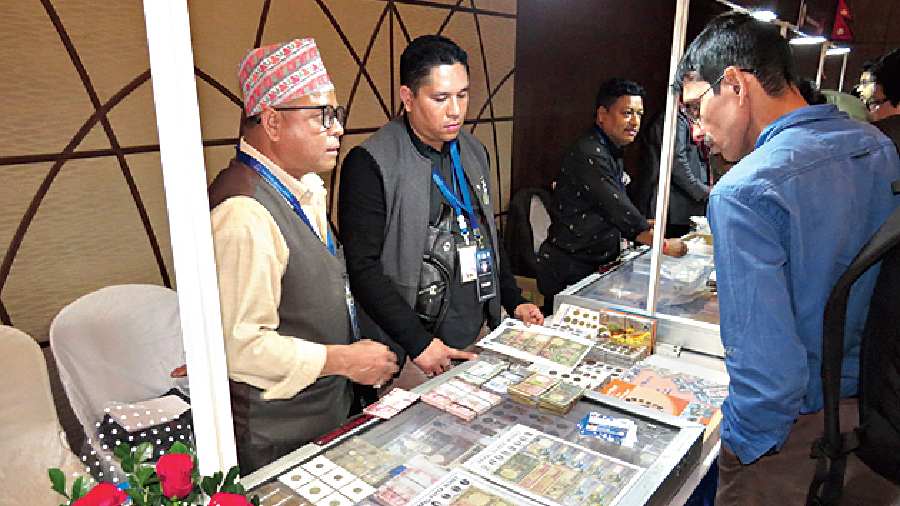A cursory lesson in the history of Nepal is on offer at Mudra Utsav, the annual event organised by The Numismatic Society of Calcutta, an organisation for collection, preservation and research on coins.
The three-day exhibition cum sale of coin, currency notes and related collectibles is underway at Haldiram Banquets in Ballygunge till Sunday.
“This is the first time an international coin exhibition is happening here. Every year, we have a theme. This time we wanted to do it differently,” said Ravi Shankar Sharma, secretary of the society.
A memorandum of reciprocation has been signed with the Nepal Numismatic Society, by which a Kolkata team will attend an exhibition in Nepal in March.
“This is the first time we are taking part in a show in India. The response has been great so far,” said Dinesh Raj Maskey, president of Nepal Numismatic Society, leading a team of 10. He has brought uncirculated currency notes of Nepal right from the reign of King Tribhuvan, coins, books on Nepal’s numismatic history as also stamps and first day covers for sale.
“We are getting maximum queries for complete sets of a monarch’s coins,” said Durga Bhakti Chhuchoon, another dealer in collectibles, from Lalitpur.
The exhibition too has a strong Nepal focus. Dharmesh Pratap Thakkar has put up his collection on portraits of kings on Nepal notes. “The initial sets of notes carried the signatures of the king’s head priest, describing him as khajanchi (treasurer), though he had no role in the treasury. The Nepal Rashtra Bank was founded in 1956. The notes issued thereafter carry the governor’s signature. The currency too changed from mohur to rupee,” said the collector from Mumbai.
His collection also details the variety of flora and fauna that have featured on the backsides, from tiger and rhinoceros to leopard and yak. “There is a message of conservation as Nepal has doubled its tiger population. The older notes with elephant pictures featured African elephants but the latest series has Asian twins raised in Nepal,” he said, pointing to a photograph of the elephants Ram and Lakhan displayed next to a note featuring them.
Sumitro Bandyopadhyay’s collection is on Hindu and Buddhist influences on Nepali coins. “The king was believed to be a reincarnation of Lord Vishnu. So the 18th century Shah dynasty coins carried shankha-chakra-gada-padma, which feature in Vishnu’s hands,” he said.
The current notes, ever since monarchy ended, have replaced the king’s portraits with Sagarmatha, as Mt. Everest is known in Nepal.
Sharma is exhibiting his Nepalese specimen banknotes, which are sent to banks abroad when a new note is circulated. His second exhibit is on Indo-Nepal relations through coins of both countries. “Chandragupta I had a king-and queen coin, also featuring his consort Kumaradevi, a princess of Lichchhavi, a kingdom comprising northern Bihar and Nepal. Nepal has also brought out commemorative coins featuring Gautama Buddha and Mahavira,” he said.
Rohit Rai has come from Delhi with his collection of coins of the Mall dynasty, spread over Kathmandu, Lalitpur and Bhaktapur.
